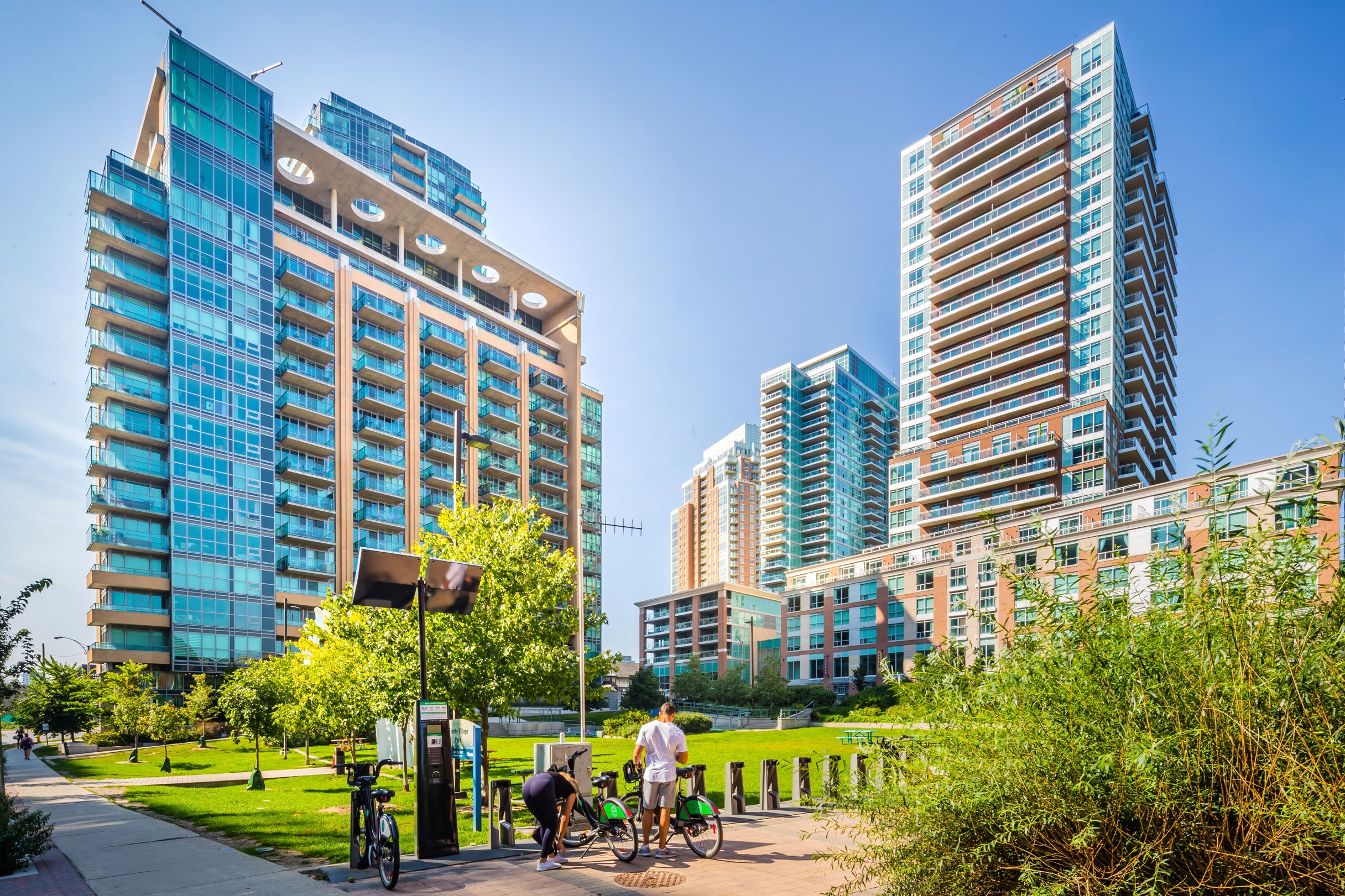
Today Liberty Village condos are the norm but years ago the neighborhood was better known for its industry and the employment opportunities that came with it. So much of Liberty Village has been re-developed but the region’s industrial past continues to be a predominant theme. There is much that can be said about what Liberty Village looked like prior to the condo boom of the 2000s. If you’ve recently moved to Liberty Village or are considering buying a condo in Liberty Village, this is an excellent place to get to know the heritage of the neighborhood a bit better.
The reason why Liberty Village was such an industrial place to begin with was primarily because of its railway access and because of the growing population in nearby areas such as Parkdale. Manufacturing companies dominated Liberty Village for a long time because of rail shipping and the advantages of the location.
It was in the 1970s that manufacturing companies began to struggle as railway shipping began to be abandoned in favor of road shipping. In addition, as manufacturing companies continued to grow their operations, many sought larger factories – something that Liberty Village was not equipped to provide. Throughout the 1980s and into the 1990s, many of these manufacturing companies would shut down – some of these buildings still stand today such as the Toy Factory while others were demolished. The 1990s saw Liberty Village properties fall into neglect as its industrial reputation soon blew away with the wind.

The same way that Liberty Village gained an industrial boom because of its location, its location would save it once again as a mix of residential, artistic, and business interests began to see the potential in re-developing Liberty Village in the late 1990s. Largely due to the fact that it is fifteen minutes away from the lake, a 20-minute streetcar ride from the financial district, and a 20-minute walk from the entertainment, fashion, and galleries of King Street West, Liberty Village found itself a new identity with a series of re-developments including high-rise and low-rise condos, office space, parks, and shops and restaurants.
What Liberty Village looked like before the post-1990s condo development period is an interesting exploration.
The railway tracks were such a dominating part of the neighborhood and it very much resembled what ‘old Toronto’ represented. For example, the Inglis factory was a major player in the manufacturing of various war materials throughout the first half of the 20th century.
The Central Prison and the Andrew Mercer Reformatory for Women are two pieces of history that would give Liberty Village its name. ‘Liberty Street’ was the street that many prisoners would set upon after they had served their time, representing the sense of renewal, rejuvenation, and rehabilitation that Liberty Village still represents to this day. Though most of the prison was demolished in 1915 and the reformatory abandoned, demolished, and then having its land re-developed into Lamport Stadium in 1974, these two institutions are key to viewing the Liberty Village neighborhood.
Though so much of the neighborhood has been knocked down, many long-time tenants and key voices in the Toronto preservationist community have attempted to retain as much of the unique industrial character of Liberty Village as possible.
The next time you take a walk through Liberty Village, look out for the historical buildings seen in some of these pictures. Many of them still stand either as lofts or as restaurants, gyms, furniture stores, art galleries, and more.
What the future holds for Liberty Village remains to be seen but the neighborhood has gone through so many incarnations throughout its history that many see it as a fundamental piece of not only Toronto’s past but Toronto’s present. The current landscape of condo developments, high-end businesses, coffee shops and restaurants, gyms, and community events continue to attach the ‘Liberty Village’ moniker to something new. The rising property values have been beneficial to many and the commitments to continued re-developments is a guarantee that the Liberty Village of the 2020s is bound to look a lot different than the neighborhood of yesteryear.
As one of Toronto’s oldest settlements, Liberty Village is a different beast altogether today than what it was. For new members of the community, Liberty Village boasts a strong service industry, proximity to some of Toronto’s top arts and design firms, and access to so many opportunities. The growth that Liberty Village has experienced since 2004 has been astounding and is set to continue into the 2020s.
Photos credit: Toronto Archive



